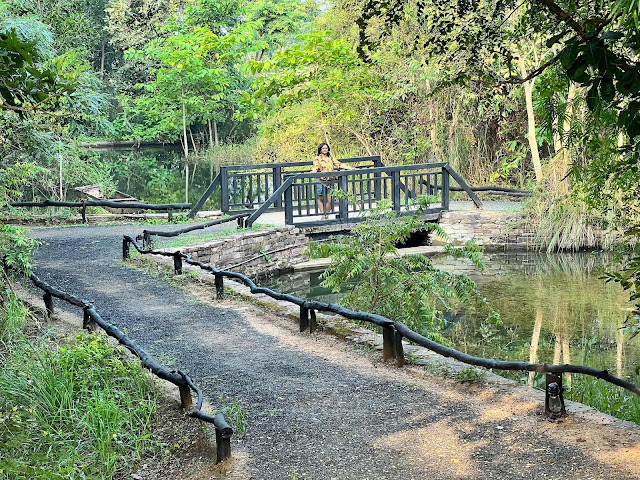In the present day, a growing concern about the fast-degrading environment has fostered the growth of the ecotourism sector worldwide. However, the definition of ecotourism or related terms like sustainable tourism, green tourism, etc., is shrouded in ambiguity. They are widely used and often misused. Here, let us understand these terms better through examples of five eco-friendly properties in India that can serve as models for the ecotourism sector.
The Need For Ecotourism
It is said that if any industry can be called “friendly” to the environment, tourism comes the closest. There are two primary reasons backing this thought. First, tourism introduces millions to the wonders of nature. By bringing people closer to the natural world, it allows them to fall in love with it. This love gives birth to the passion and will to protect nature. Today, many wildlife conservationists, researchers, photographers, and other conservation professionals speak of how their childhood visits to forests, seas, and mountains nurtured their purpose in life.
The second important implication of tourism is that it provides local communities with alternative livelihood sources. Local communities refer to the populations living within or along the borders of protected areas and other wildlife-rich habitats. They are often marginalised sections of society that depend heavily on the forest for their daily needs. Such communities are important conservation stakeholders. Without their support, the conservation of wildlife is next to impossible. Employment in the wildlife tourism industry grants them the income source that decreases their reliance on the forest, like collecting firewood, minor forest produce, etc. It also motivates them to safeguard the wild habitats that are their livelihood source.
However, while tourism has these major benefits, it can also be highly invasive and damaging to natural ecosystems if allowed to flourish unregulated. Sprawling resorts and lodges coming up in wildlife habitats might restrict the movement of wildlife and disturb their natural ways of life. Waste generated from tourism can degrade the environmental quality by polluting water, air, and soil. Wildlife living in such environments can suffer from diseases caused due to the polluted environment. Overcrowding in wildlife areas can disturb normal wildlife behaviour, adversely affecting the long-term survival of the affected species. The solution, therefore, lies in practising ecotourism as exemplified by the following five:
Vanghat Lodge, Uttarakhand
Vanghat, one of the remotest accommodations in northern India, is an eco-lodge based on the banks of the Ramganga River in the Corbett Tiger Reserve. To travel to this property, visitors must embark on a 1.8 km trek through the mountainous terrain and cross the river on a raft. Once there, it feels like staying in the wilderness. Except for the stone and mud constructions for living and dining, the rest of the property appears to be a continuation of the forest.
Water is served in glass bottles and tumblers instead of plastic. Soft lighting is used to avoid light pollution in the pristine environment. Vanghat also offers eco-friendly activities to its guests, like swimming in the Ramganga River, trekking, birdwatching, stargazing, and more. There are books related to nature and wildlife in the lodge for those who want to enjoy reading in the tranquil location. The lodge also keeps binoculars to allow visitors to enjoy wildlife-watching activities.
Guests are also directed not to use loud music in the lodge to keep the sanctity of the environment intact. Vanghat also employs staff from the local communities, providing them with a livelihood source. It also hosts wilderness training programs at regular intervals where experts in the conservation and wildlife research field share their knowledge with the participants.
Pangolakha Wilderness Homestay, Sikkim
Nestled in a tiny mountain village bordering the Pangolakha Wildlife Sanctuary of Sikkim, this homestay is a good definition of an eco-friendly property. The homestay rooms are based on the first floor of the building, while the lower floor serves as a hostel for children from the local community. Proceeds from the homestay support the education of these children. The room interiors of the homestay are simple, but the view of the surrounding forest-laden mountains is gorgeous.
Warm food prepared from locally sourced ingredients and cooked by local staff is served to the guests. All around the property is native vegetation that supports a rich diversity of wildlife. The homestay is jointly run by a local Buddhist monk named Lama Ji and Sushil Chikane, the Director of Journeys Explore from Pune.
With a team skilled in wildlife photography, Sushil draws visitors from across India to this remote homestay for wildlife photography tours, thus promoting the rich natural heritage of Sikkim. The effort allows the locals to take pride in their local biodiversity. Sushil also trains the local community members to become nature guides in Pangolakha and equips them with wildlife guidebooks, binoculars, and cameras. Guests are offered the opportunity to participate in this unique initiative by contributing to this cause.
Denwa Backwater Escape, Madhya Pradesh
This sprawling property near the Satpura Tiger Reserve, run by Pugdundee Safaris, offers luxury in an eco-friendly way. The contemporary safari-style cottages offer serene views of the Denwa River's backwaters, the surrounding wild grasslands, and the rolling hills of Pachmarhi.
The design uses locally sourced and recyclable materials like stones, recycled furniture, etc. Metal water bottles are gifted to visitors to discourage the use of plastics. The resort houses some of the best naturalists who introduce the guests to the great wonders of the wildlife world in Satpura. Nature walks with them are extremely rewarding.
Wildlife films and presentations are showcased to guests every evening before dinner. Several water bodies are inside the property while natural vegetation grows all around, continuing with the wilderness outside. Thus, the property serves as a habitat for many mammals, birds, amphibians, reptiles, etc. There is also the opportunity to take a boat ride in the river outside the property and watch many species of migratory birds visiting the area in winter.
Svanir Wilderness Ecostay, Odisha
This boutique homestay on the outskirts of Bhubaneshwar comes as quite a surprise. It is the home of the Mukherjee family, who welcome guests with a lot of warmth and care. The tribal-themed cottages here are made from local materials, are decorated very tastefully, and feature various art and craft forms of Odisha. The beautiful garden of the property is full of native trees that attract many species of birds, butterflies, and other animals. Freshly plucked fruits and vegetables from the property are used to cook the hearty meals by the homeowner, Indrani, herself, with the help of women from local communities.
The hosts employ environment-friendly methods like rainwater harvesting technology to replenish and recharge the groundwater, greywater harvesting by channelling it to the garden, and drip irrigation for watering the garden. The traditional "bucket and mug" system of bathing is used instead of bath showers to save water. The hosts also curate personalised itineraries per the guests' requirements, including a host of natural and cultural destinations promoting Odisha's rich and diverse heritage.
Wildernest Nature Resort Goa, Goa
In the densely forested mountains of the Chorla Ghats of the Western Ghats biodiversity hotspot, Wildernest Nature Resrot is a hidden gem. This eco-friendly property introduces its guests to the thrills of living in the forest and exploring the region's rich wildlife. The biggest attraction is a funicular ride of around five minutes to the property, providing jaw-dropping panoramic views of the mountains and waterfalls.
The property's cottages also come with stunning views of mountains, valleys, waterfalls, and forests. In place of landscaped gardens, native tropical forests envelop the property, where you can easily spot a host of wildlife, including beautiful birds and butterflies. Herbal ingredients are provided instead of hard chemicals for hair and body care.
Daily treks and trails are offered to visitors, such as the highest point trek, waterfall trek, and night trail, where well-trained naturalists show and share interesting trivia about the local plants and animals. The property uses eco-friendly lighting to ensure the wildlife in the area does not feel disturbed. Dance and music shows promoting local culture are also arranged in the evenings.
Every tourism initiative should aim to achieve its eco-friendly goal by having the maximum positive impact while ensuring the minimum carbon footprint. However, the responsibility also lies with the travellers who must learn to choose wisely and demand eco-friendly approaches to tourism to ensure that ecotourism thrives in the coming times.


.JPG)



.jpg)









No comments:
Post a Comment